Description
Black Birch Tree (Betula lenta) – 1-Year-Old Seedling
Overview
The Black Birch (Betula lenta), also known as Sweet Birch, is a deciduous tree admired for its aromatic bark, brilliant fall colors, and ecological benefits. This tree features glossy green foliage that turns golden-yellow in autumn, along with smooth, dark bark that releases a sweet wintergreen scent when scratched. A versatile addition to naturalized landscapes, parks, or gardens, offering both beauty and practical uses such as birch syrup and birch beer production.
Black Birch Tree Native Range
Black Birch is native to the eastern United States, particularly the Appalachian region, where it thrives in well-drained soils across hillsides and forest edges.
Growth and Form
- Height: Grows 18–24 inches per year, reaching a mature height of 40–50 feet.
- Spread: Develops a canopy spread of 20–30 feet.
- Growth Rate: Moderate to fast.
- Foliage: Dark green leaves that turn a stunning golden-yellow in the fall.
- Bark: Smooth, dark brown to nearly black bark, with aromatic properties releasing a wintergreen fragrance.
Ecological Benefits
- Wildlife Habitat: Provides food and shelter for birds, small mammals, and pollinators.
- Shade and Cooling: Its canopy helps cool urban and residential areas.
- Soil Improvement: Decomposing leaves enrich the soil with organic matter.
Black Birch Tree Hardiness and Climate Tolerance
- Hardiness Zones: 3–8, suitable for diverse climates.
- Cold Tolerance: Can endure harsh winters with temperatures as low as -30°F (-34°C).
- Drought Tolerance: Prefers consistent moisture but adapts to moderate drought conditions.
- Soil Preferences: Thrives in well-drained, loamy to slightly acidic soils.
Planting and Care
- Planting Location: Choose a spot with full sun to partial shade and well-drained soil.
- Watering: Regular watering is essential in the first few years, especially during dry spells.
- Fertilization: Apply a balanced fertilizer in spring to promote vigorous growth.
- Pruning: Requires minimal pruning; remove dead or damaged branches in late winter or early spring.
Uses
- Food and Beverage: The bark is used to produce birch beer, and the sap can be processed into birch syrup.
- Landscaping: Aesthetic choice for yards, parks, and naturalized areas with its fall color and upright growth habit.
- Timber: Durable wood, used for furniture and cabinetry.
Potential Problems
- Pests: Vulnerable to birch borers, aphids, and leaf miners; regular care minimizes risk.
- Diseases: Watch for signs of canker and root rot in overly moist or poorly drained soils.

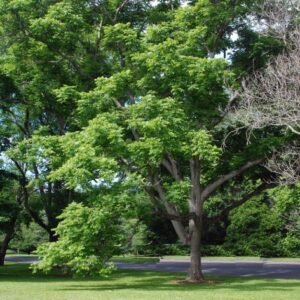

Reviews
There are no reviews yet.